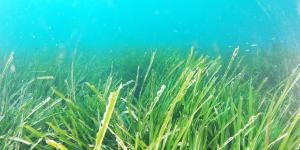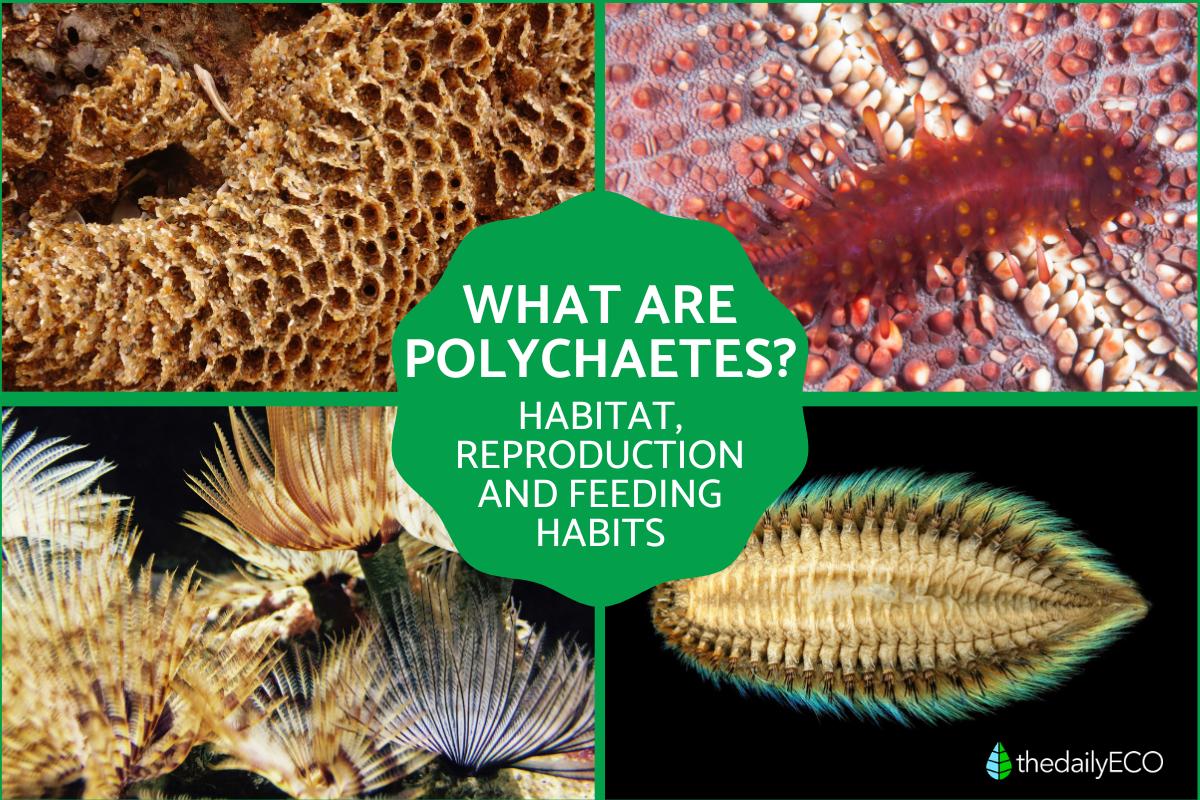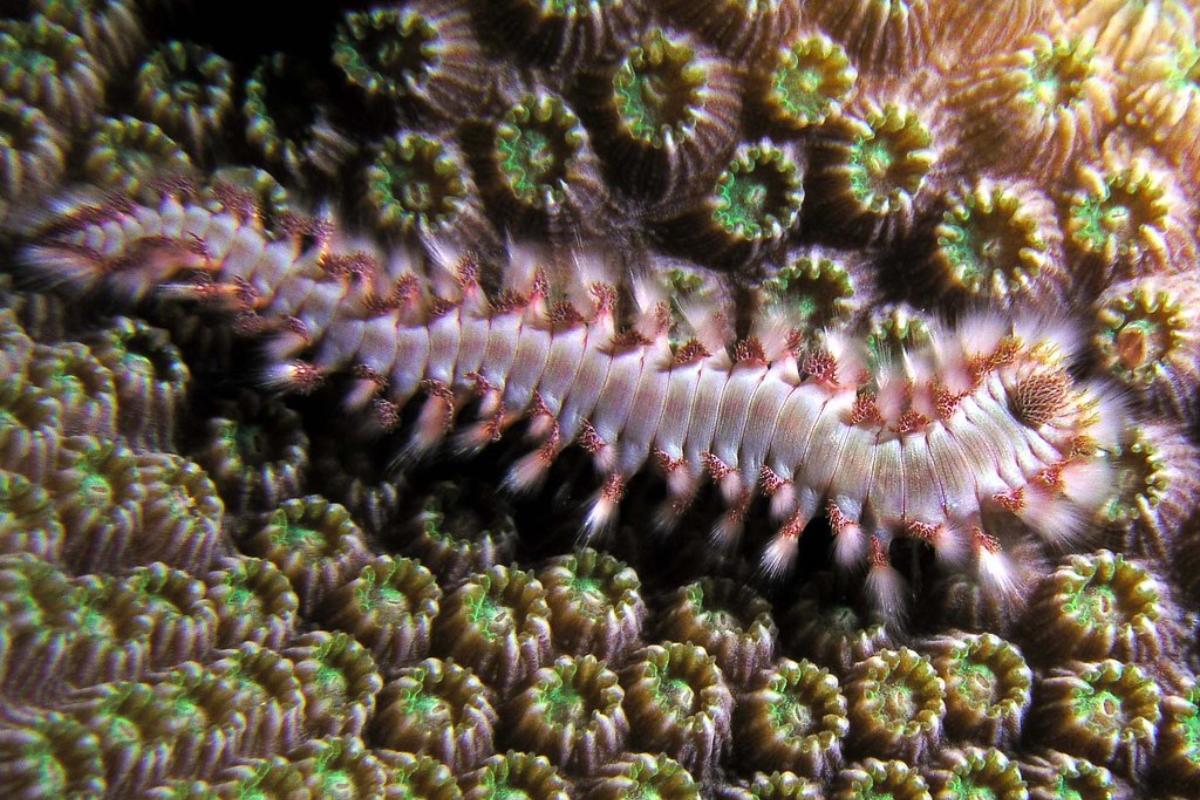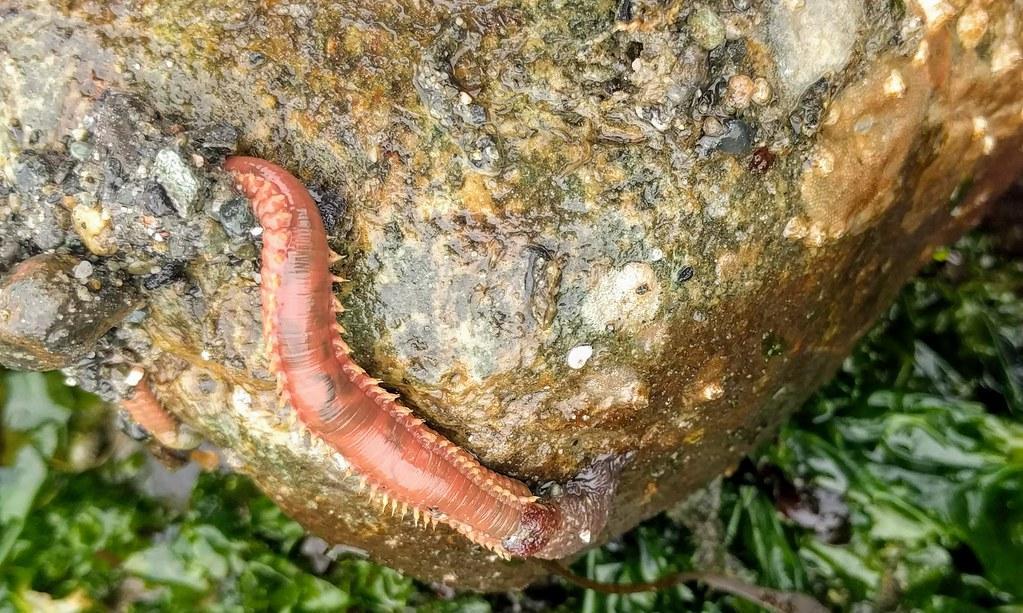What Are Polychaetes or Bristle Worms?


Polychaetes, commonly known as bristle worms, are some of the most intriguing creatures in marine ecosystems. With their segmented bodies, bristles, and diverse feeding habits, these worms play a vital role in ocean habitats worldwide. From burrowing lugworms to elegant fan worms, polychaetes exhibit an astonishing variety of adaptations that make them indispensable in their environments.
In this article by thedailyECO, we’ll dive into what polychaetes are, showcasing their habitats, feeding strategies, reproduction, and ecological importance.
What are polychaetes?
Polychaetes are marine worms found in all parts of the ocean. From species smaller than a rice grain to ones stretching over three meters, these bristle worms show how life adapts to different marine conditions. Their presence in oceans for 500 million years has led to adaptations for life from coastal waters to deep-sea trenches.
The structure of polychaetes sets them apart from other worms. Their head contains eyes and antennae that detect chemicals and movement in water. Unlike earthworms, polychaetes can track their environment with precision, which helps them find food and avoid threats in marine conditions.
Each body segment has paired structures called parapodia. These parts serve multiple functions such as moving the worm through water, breathing like gills, and catching food. The parapodia contain bristles (chaetae) in different shapes, from thin hairs to hooks, each suited to the worm's habitat and lifestyle.
These worms affect ocean health through several functions:
- Mixing and adding oxygen to seafloor sediments
- Providing food for larger marine animals
- Indicating environmental quality
- Processing organic matter in marine systems
Scientists have identified 15,000 species, with more awaiting discovery. Some build homes in coral reefs, others swim in open water, and some live near hot vents. This spread across habitats explains their success in oceans worldwide.
Polychaetes help monitor ocean health. They react quickly to environmental changes, making them early warning signs of problems in marine systems. Changes in their populations often point to broader issues.
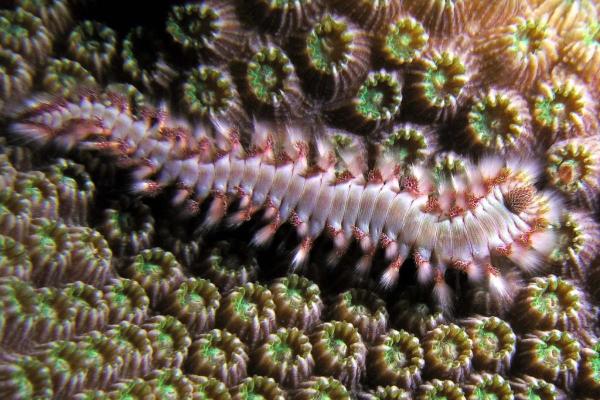
Classification of polychaetes
Polychaetes are often described by their lifestyle patterns, though these categories are simplified ways to understand their diversity rather than strict scientific classifications:
Errant polychaetes move freely through their environment. They:
- Swim or crawl actively.
- Have well-developed parapodia for movement.
- Possess sharp sensory organs including eyes and antennae.
- Often hunt as predators or graze on algae.
- Include families like Nereididae and Glyceridae.
Sedentary polychaetes live in fixed locations. They:
- Build and inhabit tubes or burrows
- Have modified parapodia adapted for tube life
- Use specialized bristles (uncini) to move within tubes
- Filter feed or collect deposited organic matter
- Include families like Sabellidae and Serpulidae
The traditional taxonomic split into Scolecida and Palpata is now outdated. Modern genetic studies show polychaete relationships are more complex.
Current classification recognizes several major lineages, though scientists still debate the exact relationships between groups.
These different lifestyles show how polychaetes have adapted to fill various roles in marine ecosystems. While these categories help us understand their biology, many species show mixed traits or unique adaptations that don't fit neatly into either group.
Habitat of polychaetes
Polychaetes live across a wide range of water environments, though most prefer marine habitats. While the vast majority inhabit the seas and oceans, some species have adapted to life in brackish estuaries and even freshwater.
These worms occupy distinct zones in aquatic ecosystems:
- Ocean floor (benthic): most species live on or in seafloor sediments
- Hard surfaces: some attach to rocks, coral reefs, or human structures
- Water column (pelagic): a few species swim freely as part of the plankton
- Intertidal zones: many species survive the daily cycles of exposure and submersion
- Deep ocean: specialized species live in trenches and near hydrothermal vents
Polychaetes show high tolerance to different water conditions. Some thrive in coral reefs while others survive in oxygen-poor or polluted waters.
Their distribution spans from tropical to polar waters, from the surface to the deepest ocean trenches. Some species burrow in mud, others build tubes on rocks, and a few swim continuously. This range of habitats shows how polychaetes have evolved to use almost every available space in aquatic environments.
This habitat flexibility helps explain why polychaetes have survived major extinction events and continue to play key roles in aquatic ecosystems worldwide.
Curious about other fascinating marine creatures? Discover the rainbow-flashing comb jellies in our detailed guide.
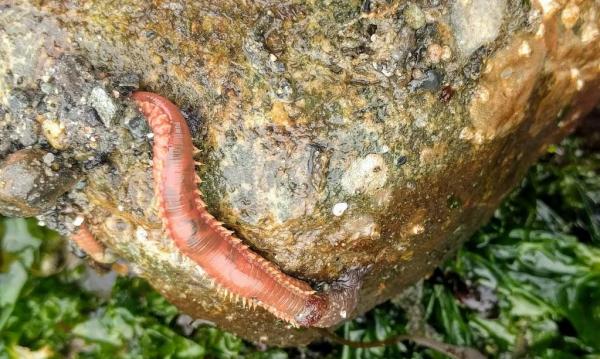
Feeding habits of polychaetes
Polychaetes have evolved diverse feeding methods that reflect their different lifestyles and habitats:
Predatory Polychaetes:
- Hunt other marine animals.
- Use extendable jaws to catch and process prey.
- Many can sense movement and chemical signals from prey.
- Include active hunters and ambush predators.
Herbivorous Polychaetes:
- Feed on algae and other marine plants.
- Have specialized jaws for scraping and cutting plant material.
- Often found in shallow waters where plants grow.
Filter feeders:
- Build tubes in fixed locations.
- Extend specialized tentacles into the water.
- Catch floating food particles and plankton.
- Create water currents to draw in food.
- Common in tube-dwelling species.
Deposit feeders:
- Process seafloor sediments for food.
- Extract organic matter from mud and sand.
Detritus feeders:
- Consume decomposing organic matter.
- Help recycle nutrients in marine ecosystems.
- Often found in sediments rich in organic material.
Many species show flexible feeding habits, switching between methods based on food availability. Some are selective, targeting specific food types, while others consume any available organic matter. This variety in feeding strategies helps polychaetes occupy different niches in marine ecosystems and contributes to their success across marine environments.
These feeding adaptations also influence their shapes. For example, filter feeders have elaborate tentacles, predators develop strong jaws, and deposit feeders have specialized mouths for processing sediment. Each adaptation represents a successful solution to the challenge of finding food in marine environments.
Reproduction in polychaetes
Polychaetes have developed diverse reproductive strategies that reflect their varied lifestyles in marine environments.
Their methods of reproduction fall into two main categories: sexual and asexual reproduction.
- In sexual reproduction, most species have separate males and females, a condition known as dioecious. However, some species are hermaphroditic, with each individual possessing both male and female reproductive organs. Many polychaetes release their eggs and sperm directly into the water, where fertilization occurs externally. Some species take additional care of their offspring by protecting their developing eggs in specialized chambers within their bodies or tubes.
- Asexual reproduction offers another path for population growth. Some polychaetes can split into two or more parts through a process called fragmentation, with each section regenerating the missing parts to form complete new individuals. Others reproduce through budding, where new individuals grow from the parent's body. These methods allow populations to expand rapidly when conditions are favorable.
The life cycles of polychaetes also show variation. While some species complete their lives in just a few weeks, others can live for several years. Most species develop through a larval stage, where the young swim freely in the plankton before settling down to their adult lifestyle. The time needed to reach maturity varies significantly between species, from rapid development to extended growth periods lasting months.
This diversity in reproductive strategies helps explain how polychaetes have become so successful across marine environments. Different methods work better under different conditions. Some strategies excel in stable environments, while others help species quickly colonize new areas or recover after population losses.
Examples of polychaetes
The diversity of polychaetes becomes clearer when we look at specific species. Let's examine four distinct species that showcase the variety of forms and lifestyles among polychaetes.
Honeycomb Worm (Sabellaria alveolata)
These sedentary polychaetes create their tubes using sand and fragments of shell, gathered from their surroundings. Groups build together, forming extensive reef-like structures that resemble honeycombs. These colonies appear along the coasts of the Atlantic Ocean and Mediterranean Sea, where they serve as habitats for other marine life. Each individual worm measures up to a few centimeters (1-2 inches), though their combined structures can grow quite large.
Scale Worm Symbiont (Gastrolepidia clavigera)
This distinctive white polychaete lives on sea cucumbers in the Indo-Pacific Ocean. Its body, measuring 2.5 to 3 centimeters (1-1.2 inches), has characteristic flattened scales along its back. While it lives in close association with sea cucumbers, scientists now understand this relationship as commensal rather than parasitic, because the worm benefits from the relationship while causing minimal impact to its host.
Pacific Feather Duster (Sabellastarte sanctijosephi)
A tube-dweller found in the Indo-Pacific tropical waters, this worm extends feeding tentacles that resemble feathers. These structures, colored in purple and white, serve dual purposes. They capture food particles and function as gills for breathing. The worm reaches 8 to 10 centimeters (3.1-3.9 inches) in length and lives between coral reefs and in tidal pools.
Sea Mouse (Aphrodita aculeata)
This bottom-dwelling polychaete inhabits shallow waters around Northern Europe. Its most notable feature is a dense cover of setae (bristles) that create brilliant iridescent displays underwater. These bristles protect a body measuring 10 to 20 centimeters (3.9-7.9 inches), with scales hidden underneath. Despite its common name and furry appearance, it's a marine worm that actively hunts other seafloor organisms.
Continue your exploration of small invertebrates with our guide to the creatures that keep our soils alive and thriving.
If you want to read similar articles to What Are Polychaetes or Bristle Worms?, we recommend you visit our Biology category.
- del Pilar, Y., Giméne, M., de la Ossa, M., Sánchez, J. and Ramos, A. (2014). Practical guide to the identification of polychaete families . University Club Editorial: Alicante.
- Beatty, R., Beer, A., & Deeming, C. (2010). The Nature Book. Great Britain: Dorling Kindersley.



